Crafting fine silver jewellery (such as bespoke hunting badges)
Read this article in German: Wie enstand das Ridinger Abzeichen?
A homage to Johann Elias Ridinger
On a clear morning, dawn breaks over ancient fields as finely dressed riders with their dogs stand ready to begin a day of work. This scene is reminiscent of bygone times and could come from an engraving that was immortalized in Johann Elias Ridinger's print shop.
Johann Elias Ridinger was a German artist and engraver of the 18th century. He was born on February 16, 1698 in Ulm and is known for his depictions of animals. Ridinger created engravings of animals such as deer, wild boars and wolves, which are still in high demand today. He is considered one of the most important animal painters and engravers of his time. Ridinger died on April 10, 1767 in Augsburg.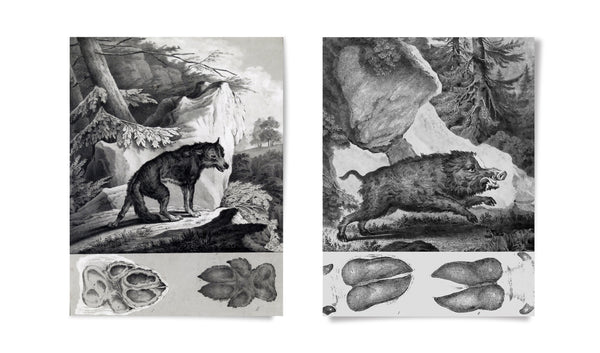
Johann Elias Ridinger was a German painter, engraver and publisher who lived from 1698 to 1767. He was known for his detailed illustrations of animals, particularly his depictions of hunting scenes.
Ridinger's works were particularly popular with the nobility and hunting enthusiasts of his time. He created detailed hunting scenes depicting various animals in their natural habitat, and these works were often used as inspiration for tapestries, furniture designs, and other decorative objects.
His prints were (and still are) highly sought after for their accuracy and attention to detail. Ridinger's main focus was on capturing the elegance of the animals he portrayed. He often depicted the animals moving and in poses that emphasized their strength and agility. His prints, decorated with scenes of wild boars, deer, pheasants (or other game), bring the spirit of hunting to life. Every stroke visible in his prints, every carefully etched line, tells a story of striving for triumph, of the connection between man and nature.
For many hunters, Ridinger stings are more than just decoration; these works of art are a window into bygone times, memories of hunting and personal experiences with the wilderness. In the hallways of their homes, amidst trophies and heirlooms, these engravings testify to a passion that knows no bounds.
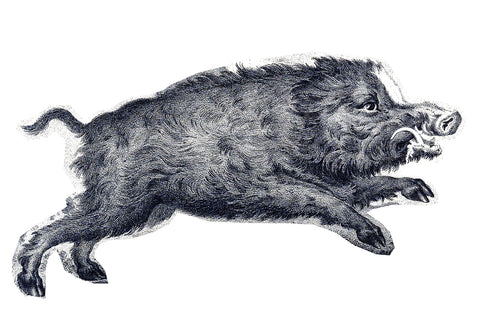
But Ridinger's influence extends far beyond the boundaries of his time. Today his legacy lives on, not only in the hearts of hunters, but also in the minds of a newer generation of artists. This led SophieSalm to ask why she shouldn't design her own hunting badge in Ridinger's honor.
From inspiration to sketch
The design process for this Riding hunting badge was initiated by a simple drawing of the planned motif. A well-executed sketch helped structure the design and establish the optimal proportions. By the way: the aesthetic effect of a hunting badge design can also be improved by adding additional elements (initials, family or local coat of arms, leaves).
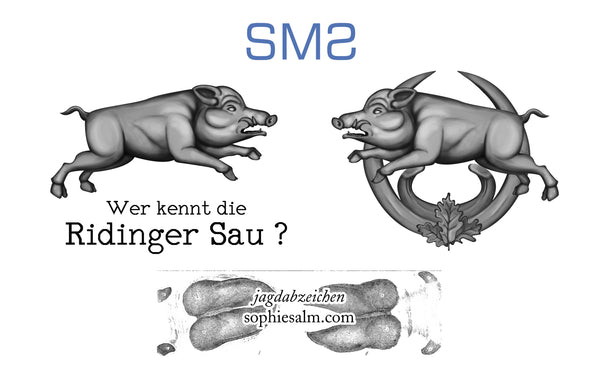
Nevertheless, the final product should be simple and clear. In this case, Sophie took a step-by-step approach, ensuring that the proposed Ridinger badge should be attractive, unique and elegant.
Production of a prototype
Historically, jewelers made prototypes by carving wax with a scalpel.
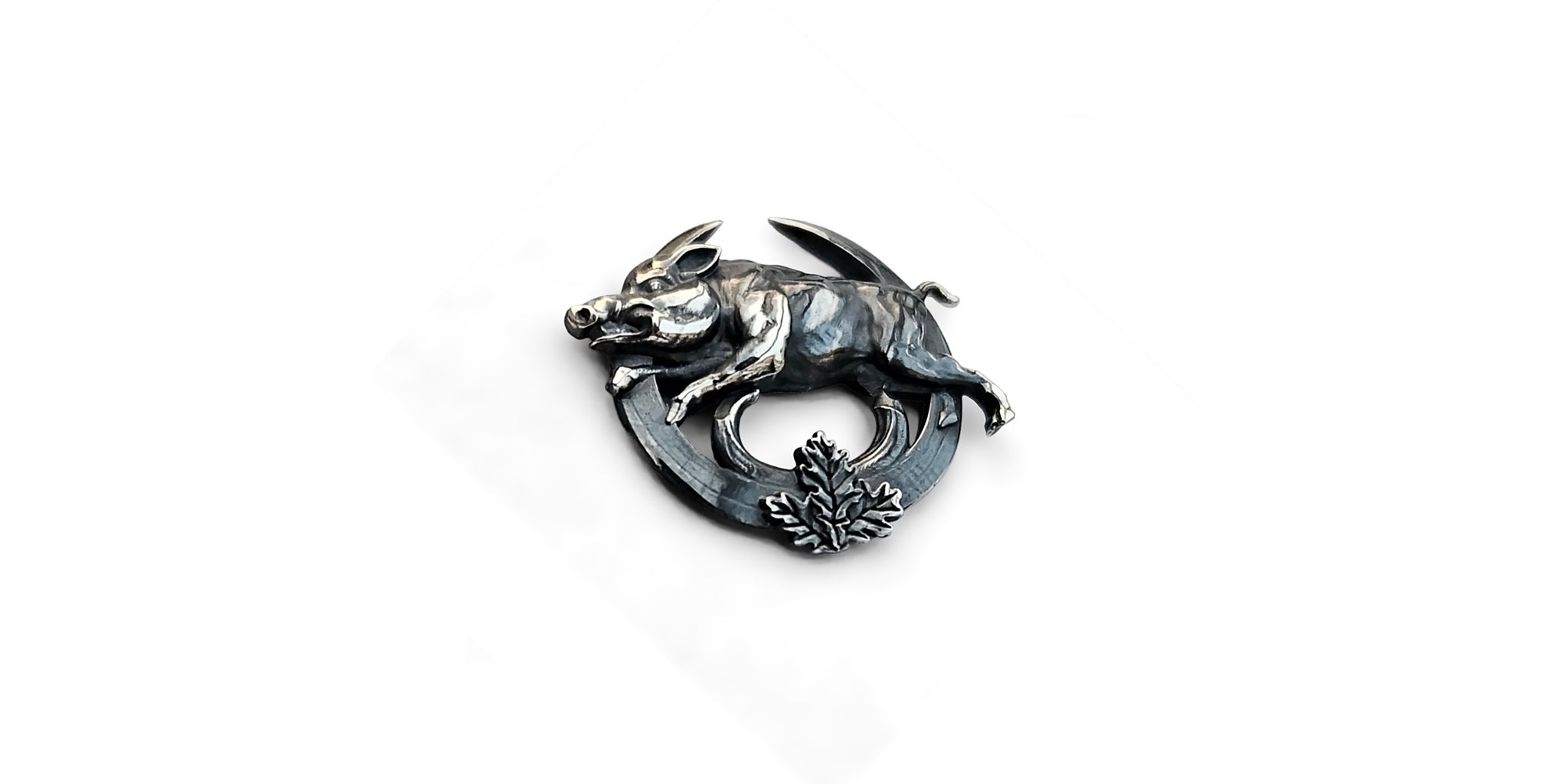
Today Sophie Salm uses more modern approaches that achieve the same result. (If you would like to find out more, please feel free to write a message to shop@sophiesalm.com.)
Tool creation
With the completion of the prototype of the Ridinger sow, a silicone mold can be produced for the first time. This shape allows Sophie to accurately reproduce the prototype. These silicone molds are sometimes cryptically referred to in the industry as “tools.”
The casting process
For this blog post, I will not explain the necessary steps involved in centrifugal casting. I would be happy to explain this in more detail at a later date. For the time being, however, it should be understood that a jeweler is able to cast new blanks with the silicone mold. Since a bad casting cannot be made “good” again through skillful handwork, the most modern casting technology is required.
Despite the most modern casting technology, the new Ridinger badge is not perfect after casting and requires a lot of further manual work before it can be worn on the hunting hat.
Working with a cast made from silver
After the centrifugal casting has been successfully completed, excess plaster is removed from the casting for the first time.
Combination of different parts
A cleaned cast consists of the desired part with one or more sprues. These sprues must be removed by hand. In other words, this excess silver is sawn off and only then are the various components soldered together.
Customizable Badges
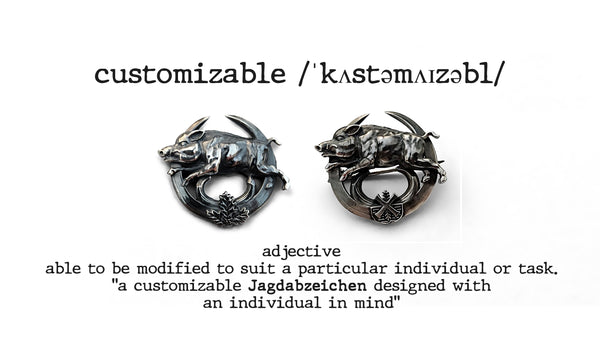
An important aside: if you wish to customize this badge then get in touch with Sophie Salm.
The surface treatment of the hunting badge
Polishing the surface
Only after the finished casting has been soldered together with other components can surface processing begin. Grinding and polishing are among the final steps in the production of the hunting badge.
What many people don't realize is that a freshly cast blank has a rough surface and this needs to be smoothed using a grinder. Only then can the desired surface be polished to a matt or high gloss. Interestingly, the shine is not achieved by removing an upper metallic layer. This is caused by the structural change in the top layer of the metal. Thanks to years of experience with the polishing machine, Sophie Salm knows how to best achieve the desired effect on the hunting badge.
Cosmetic surface treatment
As a hunting jeweler, Sophie Salm is one of Vienna's best-kept secrets. She also offers other types of cosmetic finishes for your hunting badges.
Oxidation
By applying special solutions we gave the Ridinger sow an antique look that gives it a rustic charm.This technique involves applying a dark patina to create a contrasting effect and highlight the details of the hat badge.
Electroplating
This can involve applying a thin layer of gold or rhodium to the surface of the hat badge. A rhodium plating can protect the highly polished silver jewelry from tarnishing. In our case, the surface of the Ridinger-Sau is neither rhodium-plated nor gold-plated.
These different processing methods enable Sophie Salm to refine hunting badges such as the Ridinger sow in different ways to meet the individual preferences of customers.
In summary: the creation of a unique hunting badge
Today we discussed the creation of the Ridinger badge. Many people underestimate how much manual work is necessary: from the idea to the design, as well as the many work steps that are necessary until a badge is ready to be worn on a hunting hat. The dream of having your own hunting badge doesn't become a reality through magic. It takes determination, an eye for detail, some time and hard work.
